Potrebujeme váš súhlas na využitie jednotlivých dát, aby sa vám okrem iného mohli ukazovať informácie týkajúce sa vašich záujmov. Súhlas udelíte kliknutím na tlačidlo „OK“.
ASTM D6676/D6676M-13
Standard Test Method for Cathodic Disbonding of Exterior Pipeline Coatings at Elevated Temperatures Using Interior Heating
Automaticky preložený názov:
Štandardná skúšobná metóda pre katódovej Disbonding exteriérových potrubia povlakov pri vyšších teplotách Použitie zahrievaniu interiéru
NORMA vydaná dňa 1.11.2013
Informácie o norme:
Označenie normy: ASTM D6676/D6676M-13
Poznámka: NEPLATNÁ
Dátum vydania normy: 1.11.2013
Kód tovaru: NS-36113
Počet strán: 9
Približná hmotnosť: 27 g (0.06 libier)
Krajina: Americká technická norma
Kategória: Technické normy ASTM
Kategórie - podobné normy:
Povrchová úprava a povlakování obecně
Zkoušení vnějších vlivů a zkoušení ve vnějším prostředí
Anotácia textu normy ASTM D6676/D6676M-13 :
Keywords:
cathodic disbondment, elevated temperature, pipeline coatings, ICS Number Code 19.040 (Environmental testing),25.220.01 (Surface treatment and coating in general)
Doplňujúce informácie
| Significance and Use | ||||||||||
|
4.1 Damage to a pipe coating is almost unavoidable during transportation and construction. Breaks or holidays in pipe coatings may expose the pipe to possible corrosion since, after a pipe has been installed underground, the surrounding earth will be moisture-bearing and will constitute an effective electrolyte. Applied cathodic protection potentials may cause loosening of the coating, beginning at holiday edges. Spontaneous holidays may also be caused by such potentials. Usually exterior pipeline coatings applied over pipes carrying hot media (oil, gas) are exposed to high temperature inside the pipe and low temperature outside and subjected to temperature gradient. Heat flux is directed from metal (substrate) to the coating. This test method provides accelerated conditions for cathodic disbondment to occur under simulated heating and provides a measure of resistance of coatings to this type of action. 4.2 The effects of the test are to be evaluated by physical examinations and monitoring the current drawn by the test specimens. Usually there is no correlation between the two methods of evaluation, but both methods are significant. Physical examination consists of assessing the effective contact of the coating with the metal surface in terms of observed differences in the relative adhesive bond. It is usually found that the cathodically disbonded area propagates from an area where adhesion is zero to an area where adhesion reaches the original level. An intermediate zone of decreased adhesion may also be present. 4.3 Assumptions associated with test results include: 4.3.1 Maximum adhesion, or bond, is found in the coating that was not immersed in the test liquid, and 4.3.2 Decreased adhesion in the immersed test area is the result of cathodic disbondment. 4.4 Ability to resist disbondment is a desired quality on a comparative basis, but disbondment in this test method is not necessarily an adverse indication of coating performance. The virtue of this test method is that all dielectric-type coatings now in common use will disbond to some degree, thus providing a means of comparing one coating to another. 4.5 The amount of current flowing in the test cell is a relative indicator of the extent of areas requiring protection against corrosion; however, the current density appearing in this test is much greater than that usually required for cathodic protection in natural, inland soil environments. 4.6 Test voltages higher than those recommended may result in the formation of chlorine gas. The subsequent chemical effects on the coating could cast doubt on the interpretation of the test results. Filter tube with fritted disk (see Test Method G95) or layer of sand (40 mesh) put on the coated surface may reduce this effect. |
||||||||||
| 1. Scope | ||||||||||
|
1.1 This test method describes an accelerated procedure for determining comparative characteristics of coating systems applied to the exterior of steel pipe for the purpose of preventing or mitigating corrosion that may occur in underground or immersion where the pipe is carrying heated media and is under cathodic protection. This test method is intended for use with samples of coated pipe, or with a specimen cut from the section of coated pipe or flat plates, and is applicable to such samples when the coating is characterized by function as an electrical barrier. 1.2 This test method is intended to simulate conditions when external coatings are exposed to high temperature inside the pipe and to an ambient temperature outside, and thus are subjected to temperature gradient. If elevated temperatures are required but without temperature gradient, see Test Method G42. 1.3 The values stated in either SI units or inch-pound units are to be regarded separately as standard. The values stated in each system may not be exact equivalents; therefore, each system shall be used independently of the other. Combining values from the two systems may result in non-conformance with the standard. 1.4 This standard does not purport to address all of the safety concerns, if any, associated with its use. It is the responsibility of the user of this standard to establish appropriate safety and health practices and determine the applicability of regulatory limitations prior to use. |
||||||||||
| 2. Referenced Documents | ||||||||||
|
Podobné normy:
Historická
1.11.2013
Historická
1.4.2011
Historická
1.5.2012
Historická
1.8.2013
Historická
1.11.2007
Historická
1.7.2012
Odporúčame:
Aktualizácia technických noriem
Chcete mať istotu, že používate len platné technické normy?
Ponúkame Vám riešenie, ktoré Vám zaistí mesačný prehľad o aktuálnosti noriem, ktoré používate.
Chcete vedieť viac informácií ? Pozrite sa na túto stránku.


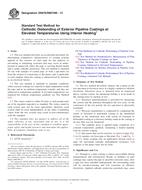
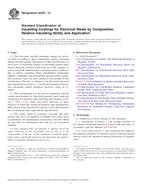 ASTM A976-13
ASTM A976-13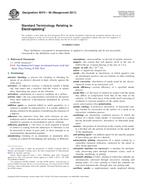 ASTM B374-06(2011)..
ASTM B374-06(2011)..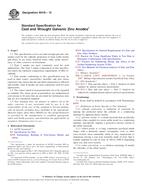 ASTM B418-12
ASTM B418-12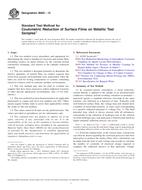 ASTM B825-13
ASTM B825-13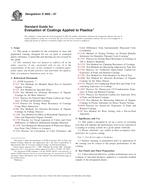 ASTM D3002-07
ASTM D3002-07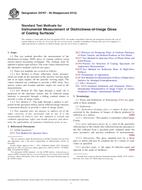 ASTM D5767-95(2012)..
ASTM D5767-95(2012)..
 Cookies
Cookies
